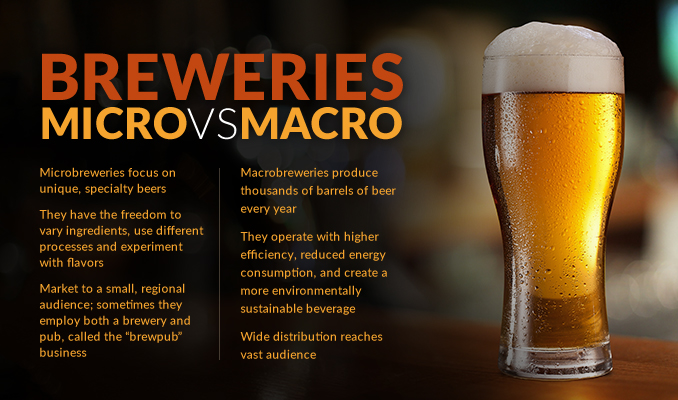Chapter 7: The Microbrewing and Craft Beer Movement
Major breweries, or macrobreweries, have begun to change the way they operate in order to achieve higher efficiency, reduce their consumption of energy and water and create a more environmentally sustainable beverage. Microbreweries that don’t have the large profits of macrobreweries stand to benefit greatly from increased energy efficiency. While large breweries produce thousands of barrels of beer every year, microbreweries tend to focus on unique, specialty beers.
Through creativity and ingenuity, microbreweries have the freedom to craft beers that include variations in ingredients, utilize different fermentation processes and create experimental flavors unique to their brand. In some cases, microbreweries produce so little beer that they don’t have the distribution macrobreweries have, preferring to market to small, regional audiences. In order to get their delicious beers into the glasses of consumers, they often employ both a brewery and a pub, also called the “brewpub” business model.
By employing the proper air compressors and improving energy efficiency, small breweries and distilleries can reduce their expenses and focus more on making the specialty beers that are unique to their brand.
Table of Contents
- Crafting Great Beer and Spirits
- Chapter 1: A Brief History of Beer — An Ancient Beverage
- Chapter 2: Nature's Contribution — The Ingredients
- Chapter 3: The Art of Brewing and Distillation
- Chapter 4: The Tools of the Trade — Vessels, Stills, and Compressors
- Chapter 5: How to Increase Energy Efficiency in Microbreweries and Distilleries
- Chapter 6: How to Save Money in Production Line with Better Bottling Practices
- Chapter 7: The Microbrewing and Craft Beer Movement
- Chapter 8: Evolution of Crafting Beer and Whiskey


